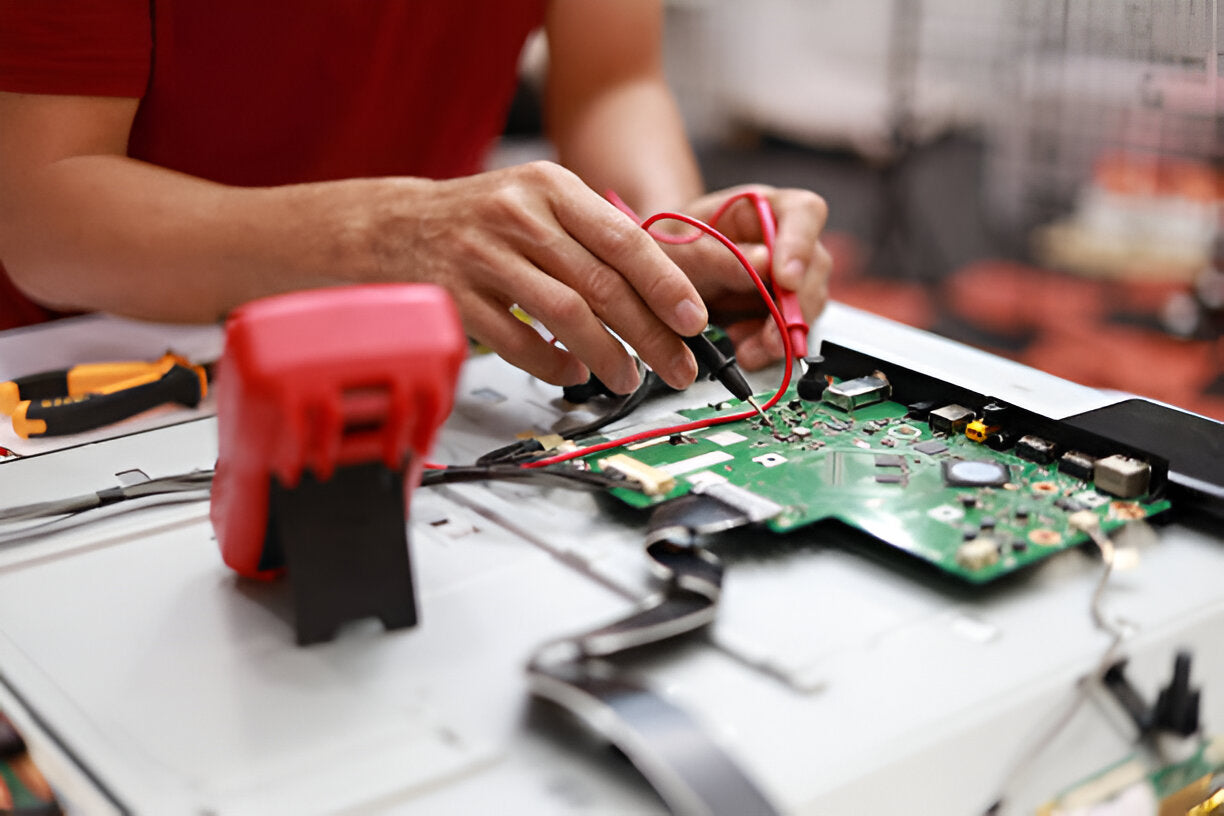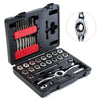
How to use Diagnostic Tools in Computer Repair
Diagnosing problems in computers can seem tough, but with the right tools, it becomes much easier. This guide will help you understand how to effectively use diagnostic tools for computer repair. Whether you're a beginner or looking to improve your skills, these tips and tools will set you on the right path to fixing common issues.
Key Takeaways
-
Always have a basic tool kit for repairs.
-
Use built-in Windows tools for quick diagnostics.
-
Consider third-party software for deeper analysis.
-
Regularly test your hardware to catch issues early.
-
Keep your tools organized for efficient repairs.
Understanding the Importance of a Computer Repair Tool Kit
A well-equipped computer repair tool kit is essential for any technician. It not only helps in diagnosing issues but also ensures that repairs are done efficiently. Here’s why having the right tools matters:
Essential Tools for Every Technician
-
Screwdrivers: A variety of sizes for different screws.
-
Multimeter: For checking electrical components.
-
Anti-static wrist strap: To prevent static damage.
Why Quality Matters in Your Tool Kit
Using high-quality tools can make a significant difference in your work. Cheap tools may break easily, leading to delays and frustration. Investing in quality tools ensures:
-
Durability: They last longer and perform better.
-
Precision: Better accuracy in repairs.
-
Safety: Reduces the risk of accidents.
How to Organize Your Tool Kit for Efficiency
An organized tool kit saves time and effort. Here are some tips:
-
Categorize tools: Group similar tools together.
-
Label compartments: Make it easy to find what you need.
-
Regularly check inventory: Ensure all tools are in good condition.
A well-organized tool kit not only enhances efficiency but also boosts confidence in tackling repairs. These 10 tools provide a solid foundation for any repair endeavor, ensuring efficient troubleshooting and successful outcomes.
Related Article: How a Computer Tool Kit Can Save You Time and Money
Using Built-In Windows Diagnostic Tools
Running the Windows Troubleshooter
The Windows Troubleshooter is a great first step when your computer is acting up. Here’s how to use it:
-
For Windows 11, go to Settings > System > Troubleshoot.
-
For Windows 10, navigate to Settings > Update & Security > Troubleshoot.
-
Select Other troubleshooters in Windows 11 to find specific issues like Bluetooth or Network problems.
If the troubleshooter detects an issue, it will suggest solutions, which may include automatic repairs.
Utilizing Windows Memory Diagnostic
If your computer is slow or freezing, it might be a RAM issue. To check this:
-
Search for Windows Memory Diagnostic in the taskbar.
-
Choose Restart now and check for problems or Check for problems the next time I start my computer.
-
After your PC restarts, the tool will scan for memory issues. You can view the results in Event Viewer.
Leveraging Performance and Reliability Monitors
Windows also includes tools to monitor performance and reliability:
-
Performance Monitor: This tool helps track system performance over time.
-
Reliability Monitor: It provides a timeline of system events and errors, helping you identify patterns.
|
Tool |
Purpose |
|---|---|
|
Windows Troubleshooter |
Fix common issues automatically |
|
Windows Memory Diagnostic |
Check for RAM problems |
|
Performance Monitor |
Track system performance metrics |
|
Reliability Monitor |
View system stability over time |
Remember: Regularly using these built-in tools can help keep your system running smoothly and identify issues before they become serious problems.
By utilizing these built-in diagnostic tools, you can effectively troubleshoot and maintain your Windows system, ensuring optimal performance and reliability.
Third-Party Diagnostic Software for Comprehensive Analysis

When built-in tools aren't enough, third-party diagnostic software can provide a deeper look into your computer's health. These tools can help identify issues that standard utilities might miss. Here are some key options:
Top Third-Party Tools to Consider
-
MemTest86+: This tool is widely recognized for testing RAM. It offers a more thorough analysis than the built-in Windows Memory Diagnostic tool and is free to use.
-
CrystalDiskInfo: Ideal for checking hard drive health, this software uses SMART technology to monitor various drive parameters, including read error rates and spin-up times.
-
HWiNFO: This tool provides extensive information about your system's hardware, including real-time monitoring of CPU and GPU performance.
How to Safely Download and Install Diagnostic Software
-
Always download from the official website or trusted sources.
-
Use antivirus software to scan the downloaded files before installation.
-
Follow the installation prompts carefully to avoid unwanted software.
Comparing Free vs. Paid Diagnostic Tools
|
Feature |
Free Tools |
Paid Tools |
|---|---|---|
|
Basic Diagnostics |
Yes |
Yes |
|
Advanced Features |
Limited |
Extensive |
|
Customer Support |
Community Forums |
Direct Support |
|
Regular Updates |
Infrequent |
Frequent |
Using third-party diagnostic tools can significantly enhance your ability to troubleshoot and repair computer issues. They provide insights that can lead to quicker resolutions and better system performance.
Diagnosing Hardware Issues with Specialized Tools
When it comes to fixing computer problems, using the right tools is essential. Specialized diagnostic tools can help you identify hardware issues quickly and accurately. Here’s how to effectively diagnose hardware problems:
Testing RAM with MemTest86+
To check your computer's memory, you can use MemTest86+. This tool runs a series of tests to find any faulty RAM modules. Here’s how to use it:
-
Download MemTest86+ from its official site.
-
Create a bootable USB drive with the software.
-
Boot your computer from the USB and let the tests run.
Analyzing Hard Drives with CrystalDiskInfo
CrystalDiskInfo is a great tool for checking the health of your hard drive. It uses SMART data to provide insights into potential failures. Follow these steps:
-
Download and install CrystalDiskInfo.
-
Open the program to view the health status of your drives.
-
Look for any warnings or errors that indicate issues.
Using Intel Processor Diagnostic Tool for CPU Issues
If you suspect problems with your CPU, the Intel Processor Diagnostic Tool can help. Here’s how to use it:
-
Download the tool from Intel’s website.
-
Install and run the program.
-
Follow the on-screen instructions to test your CPU.
Diagnosing hardware issues early can save you time and money. Regular checks can prevent bigger problems down the line.
By using these specialized tools, you can effectively pinpoint hardware issues and take the necessary steps to resolve them. Remember, keeping your tools organized and updated is key to efficient troubleshooting!
Related Article: The Role of Digital Multimeters in Computer Repair: A Beginner’s Guide
Use Diagnostic Tools for Easy Troubleshooting
Using diagnostic tools for computer repair is essential for keeping your devices running smoothly. By understanding how to use tools like the Windows Troubleshooter and Memory Diagnostic, you can quickly identify and fix common issues. Regular checks can prevent bigger problems down the line, saving you time and money. Remember, if you ever feel stuck, don't hesitate to reach out for professional help. With the right knowledge and tools, you can ensure your computer stays in great shape.
Related Article: Computer Tool Kit Guide: Everything You Need to Know



